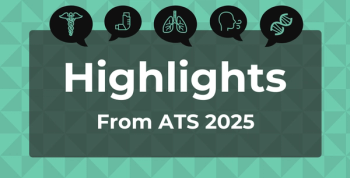
Prolonged Survival in MM: Insights From the Largest Ongoing US Registry
Key Takeaways
- Younger age and better health at diagnosis correlate with improved long-term survival in multiple myeloma patients.
- The Connect® MM Registry offers extensive data on disease characteristics, treatment patterns, and patient outcomes.
The Connect MM Registry is the longest-running and largest registry in the US, providing invaluable prognostic insights into various patient and disease characteristics.
Patients with
MM does not have a cure; however, the relatively recent advent of new therapeutics and patient management strategies have provided great benefits to this patient population and prolonged their survival. Notably, those with MM can now survive beyond 10 years with the disease.2 Despite these achievements, the present authors noted that 5-year survival rates throughout the US do not exceed 60%. To better understand why this is, “Long-running, prospective observational cohort studies, like disease registries, are important sources of longitudinal follow-up data to observe changes in survival in a specific disease over time.”1
Since its inception in 2009, Connect MM Registry (NCT01081028) constitutes the biggest ongoing MM registry in the US. Thirteen years of follow-up data have expanded clinical knowledge about disease characteristics, patient subgroups and prognoses, the evolution of treatment patters and approaches, health care resource usage, and patient-reported quality of life (QOL).
The present researchers used this resource to conduct a comprehensive analysis on LTS, a patient population that remains vastly understudied. Eligible patients had to be at least 18 years of age, received an MM diagnosis within 2 months of their enrollment in the registry, and had a minimum of 8 years of follow-up. Patients were included across an estimated 250 government, academic, and community sites throughout the US and separated into 2 cohorts: cohort 1 (n = 1493), enrolled between September 2009 and December 2011, and cohort 2 (n = 1518), enrolled between December 2012 and April 2016.
LTS status indicated that a patient had 8 or more years of follow-up, while non-LTS status indicated they had under 8 years. Available data as of February 2023 demonstrated that 17.2% (n = 518 of 3011) of patients were considered LTS, who were younger compared with non-LTS (median age, 62 vs 68 years) and registered superior Eastern Cooperative Oncology Group (ECOG) performance statuses (score, 0-1; 64.1% for LTS vs 53% for non-LTS).
Furthermore, LTS exhibited better prognoses (30.3% of LTS vs 15.7% in non-LTS were diagnosed with stage I disease). Less cases of impaired renal function and high-risk cytogenetics were observed in LTS vs non-LTS individuals (17.4% vs 31.6%; 11% vs 16.6%). Furthermore, 68.5% of LTS were supposed to receive stem cell transplant (SCT) compared with 46.4% in non-LTS; 64.9% and 33.9% of those individuals actually received SCT.
LTS tended to have a greater number of disease assessments throughout the year vs non-LTS (median, 2 vs 1.5), as well as a greater median amount of lines of therapy (median, 2 vs 1). There were also less instances of disease progression in the first 6 months during first-line therapy for LTS compared with non-LTS (1.9% vs 7.4%); LTS also typically experienced their first relapse later than non-LTS.
QOL was quantified on a quarterly basis using a total score from the Functional Assessment of Cancer Therapy – Multiple Myeloma (FACT-MM) and the EuroQoL 5-dimension (EQ-5D) overall index. Overall, LTS demonstrated greater FACT-MM total scores and average EQ-5D overall index compared with non-LTS.
References
1. Terebelo HR, Omel J, Wagner LI, et al. Characteristics and treatment patterns of long-surviving patients with multiple myeloma: over 13 years of follow-up in the Connect® MM Registry. Clin Lymphoma Myeloma Leuk. 2025;25(1):58-66. doi:10.1016/j.clml.2024.11.001
2. SEER incidence data. NIH. Updated November 5, 2024. Accessed February 6, 2025.
Newsletter
Stay ahead of policy, cost, and value—subscribe to AJMC for expert insights at the intersection of clinical care and health economics.








































